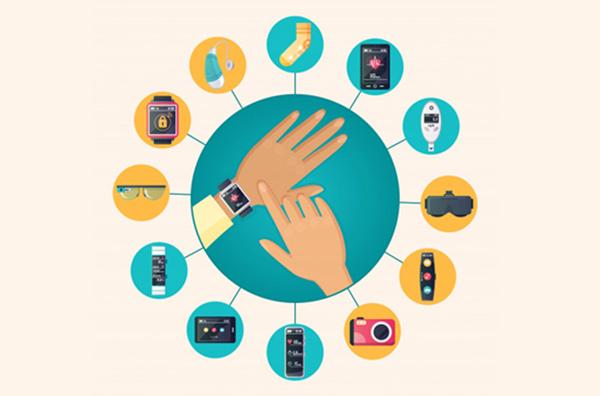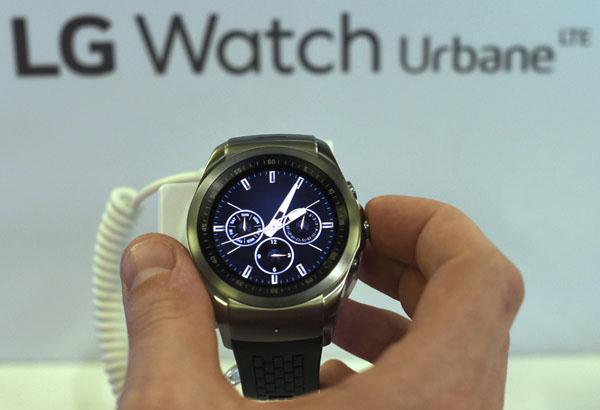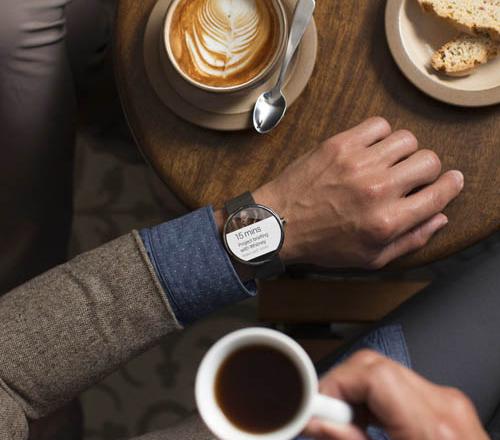You are here
Pandemic lifts interest and sales of wearable gadgets
Aug 03,2021 - Last updated at Aug 03,2021

Photo courtesy of wordpress.com
BARCELONA — Earphones embedded in pearl earrings, a smartwatch that measures body temperature, a diamond ring that monitors sleep patterns: The wearable gadgets market has boomed as the pandemic boosts interest in health monitoring and working from home.
While worldwide sales of smartphones slumped last year, a record 527 million wearables were sold in 2020, up from 384 million in 2019, according to research firm Strategy Analytics.
It was the first time that global wearable sales topped half-a-billion and analysts expect the trend to continue, with the firm forecasting the devices will overtake smartphone sales by the end of the decade.
The surge in wearables sales was in focus at the four-day Mobile World Congress, the telecom industry’s biggest annual gathering, in Barcelona.
Ear-worn devices such as earbuds, which can be used to make calls and listen to music, accounted for nearly two-thirds of global wearable sales last year as people working from home upgraded their headphones for video calling.
Wristwear such as fitness trackers and smartwatches, which can monitor steps, the heart rate and even oxygen levels, accounted for 36 per cent of worldwide wearable sales, as people paid more attention to their health during the pandemic and exercise moved outdoors since gyms were closed in many places.
“Everybody is becoming much more health focused and wearables are a good device to assist with that,” said Neil Mawston, an executive director at Strategy Analytics.
More features
Falling prices and new features and shapes for wearables were also helping to deliver stronger sales, analysts said.
Chinese tech giant Huawei for example launched a new flaghsip smartwatch ahead of the congress which for the first time includes a high-precision sensor to detect skin temperature.
“We expect device makers to keep adding more sensors to devices,” said Leo Gebbie, senior wearables analyst at consultancy CCS Inight, which expects 1.2 billion devices to be in use worldwide by the end of 2025.
“It will be interesting to see what else can be added to smartwaches because I think people will want to see more features.”
While the wearables market is dominated by big firms such as Apple and Samsung, smaller companies that focus on specific markets are “fuelling growth”, said Ramon Llamas, wearables research director at market research firm IDC.
Indian consumer electronics firm boAt for example has become the world’s fifth biggest wearables supplier by focusing solely on the Indian market with its budget wireless earbuds, he said.
But with companies releasing new devices at a faster rate, Gebbie warned there often appears to be little to separate them out, especially at the lower end of the market where “wearable devices increasingly seem to be much of a muchness”.
‘Sea change’
Better design is also helping to boost the appeal of wearables. The tumbling size of components and batteries has made it possible to make smaller and sleeker wearables that often do not look like an electronic device.
German firm NOVA for example displayed at the congress its wireless earphones which are embedded in clip-on pearl earrings that allow users to listen to music and make calls.
The device uses patented technology than can send sound from your earlobe directly to your ear canal without any sound leakage.
Finnish health technology firm Oura has put out a wedding-band sized ring that tracks the wearer’s activity — including sleep, steps, heart rate and body temperature.
The device, which comes in different metals including a top-end diamond studded one, caught the attention of major sports teams in the United States as well as Britain’s Prince Harry who was been spotted wearing it.
But Gebbie of CCS Insight said consumers have gotten used to the look of wearables and the need “for them to blend in” has “disappeared a bit”.
“When smartwatches were still fairly new, there was a certain stigma around wearing one, it was seen maybe as a bit geeky or a bit nerdy. I think there has been a bit of a sea change in terms of how people feel about them,” he added.
Related Articles
Defying scepticism and geek-stigma, mobile phone firms are determined this year to sell you a wristwatch wirelessly connected to your mobile phone.
Google said Tuesday it was bringing Android to wearable devices, as LG and Motorola started the countdown to Internet-enabled watches based on the dominant platform for smartphones.
BARCELONA — Consumers are snapping up fitness trackers, smartwatches and other connected wearable gadgets — but huge numbers wind up in draw



















